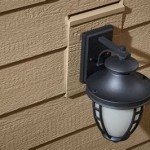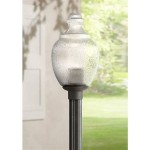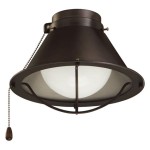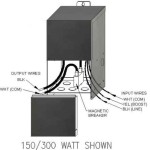```html
Understanding Outdoor Garden Light Transformers
Outdoor garden lighting enhances the aesthetic appeal and safety of residential and commercial properties. To operate these low-voltage lighting systems effectively, an outdoor garden light transformer is an essential component. This device reduces standard household voltage (typically 120V or 240V AC) to a safer, lower voltage (commonly 12V or 24V AC), suitable for outdoor landscape lighting fixtures. Choosing the right transformer is crucial for optimal performance, longevity, and safety of the lighting installation.
A transformer's primary function is to convert high-voltage alternating current (AC) to low-voltage AC. This conversion is achieved through electromagnetic induction. The transformer consists of two or more coils of wire, known as the primary and secondary windings, wrapped around a common iron core. When AC voltage is applied to the primary winding, it creates a magnetic field in the core. This magnetic field, in turn, induces a voltage in the secondary winding. The ratio of the number of turns in the primary and secondary windings determines the voltage transformation ratio. For example, if the primary winding has 100 turns and the secondary winding has 10 turns, the voltage will be reduced by a factor of 10.
Outdoor garden light transformers are specifically designed to withstand the elements. They are typically encased in weatherproof enclosures made of materials like stainless steel, powder-coated aluminum, or heavy-duty plastic. These enclosures protect the internal components from rain, snow, dust, and UV radiation, ensuring reliable operation over an extended period. Furthermore, they often feature safety features such as overload protection, short-circuit protection, and thermal protection to prevent damage to the transformer and the lighting system.
Key Considerations When Selecting an Outdoor Garden Light Transformer
Selecting the appropriate transformer requires careful consideration of several factors to ensure compatibility, safety, and efficient operation. These include voltage requirements, wattage calculations, enclosure type, and additional features.
Voltage Requirements: The first step in selecting a transformer is determining the voltage requirements of the landscape lighting fixtures. Most outdoor garden lights operate at either 12V or 24V AC. The transformer must be capable of providing the correct voltage to power the lights. Using the wrong voltage can damage the lights or result in poor performance. Confirm the voltage rating of the lighting fixtures before choosing a transformer.
Wattage Calculations: The total wattage of all the lights connected to the transformer must be calculated to determine the appropriate transformer size. It is essential to choose a transformer with a wattage rating that exceeds the total wattage of the lights. As a general rule, it is recommended to choose a transformer that is rated for at least 20% more wattage than the total load. This provides a safety margin and prevents the transformer from being overloaded. For instance, if you have 10 lights each rated at 5 watts, then the total wattage is 50 watts. In this case, a transformer rated for at least 60 watts should be selected. Under-sizing the transformer can lead to overheating, reduced lifespan, and potential failure.
Enclosure Type and Weather Resistance: Outdoor garden light transformers are exposed to various weather conditions, making a robust and weather-resistant enclosure paramount. The enclosure should be constructed of durable materials such as stainless steel, powder-coated aluminum, or UV-resistant plastic. These materials offer protection against corrosion, impact, and UV degradation. Look for transformers with a NEMA (National Electrical Manufacturers Association) rating that indicates the level of protection against environmental factors. A NEMA 3R rating, for example, signifies protection against rain, sleet, and snow. Selecting an appropriately rated enclosure ensures the transformer's longevity and reliability in outdoor environments.
Safety Features: Modern outdoor garden light transformers incorporate various safety features to protect against electrical hazards and equipment damage. Overload protection prevents the transformer from being damaged by excessive current draw. Short-circuit protection immediately shuts down the transformer in the event of a short circuit, preventing fires and electrical shocks. Thermal protection prevents the transformer from overheating, which can damage the internal components and reduce its lifespan. These safety features are crucial for ensuring the safe and reliable operation of the lighting system.
Types of Outdoor Garden Light Transformers
Outdoor garden light transformers are available in various types, each with its own characteristics and applications. These include magnetic transformers, electronic transformers, and LED drivers.
Magnetic Transformers: Magnetic transformers are the traditional type of transformer used for outdoor lighting. They utilize a core of laminated steel and copper windings to convert voltage. Magnetic transformers are known for their durability, long lifespan, and ability to handle inrush current — the surge of current that occurs when lights are first turned on. They are also relatively resistant to voltage fluctuations and are less susceptible to damage from power surges. However, magnetic transformers are typically larger and heavier than electronic transformers and tend to be less energy-efficient.
Electronic Transformers: Electronic transformers use electronic circuits to convert voltage. They are smaller, lighter, and more energy-efficient than magnetic transformers. Electronic transformers also offer advantages such as dimming capabilities and voltage regulation. However, they are more sensitive to voltage fluctuations and power surges and may have a shorter lifespan than magnetic transformers. Electronic transformers can sometimes have compatibility issues with certain types of LED bulbs, so it's crucial to verify compatibility before installation.
LED Drivers: While technically not transformers in the traditional sense, LED drivers perform a similar function for LED lighting systems. LED drivers are electronic circuits designed to provide a constant current or voltage to LED lights. LEDs require a specific current or voltage to operate correctly, and variations can lead to reduced lifespan or damage. LED drivers convert the incoming AC voltage to a stable DC voltage or current that is optimal for LEDs. They are specifically designed to work with LED lighting fixtures and offer features such as dimming and color control. Consider that some LED fixtures have built-in drivers, while others require external ones. When using external drivers, it is crucial to match the driver's specifications to the LED fixtures' requirements.
Installation and Maintenance of Outdoor Garden Light Transformers
Proper installation and regular maintenance are essential for ensuring the safe and reliable operation of outdoor garden light transformers. Selecting a suitable location, following proper wiring practices, and performing periodic inspections are key to maximizing the transformer's lifespan and minimizing the risk of electrical hazards.
Location Selection: The location of the transformer is a crucial factor in its performance and longevity. The transformer should be installed in a well-ventilated area to prevent overheating. It should also be protected from direct sunlight and excessive moisture. Mounting the transformer on a wall or post can provide protection from the elements. Avoid installing the transformer in areas prone to flooding or where it could be easily damaged. Additionally, consider the proximity to the power source and the lighting fixtures to minimize voltage drop across long wire runs.
Wiring Practices: Proper wiring is essential for the safe and efficient operation of the lighting system. Use weatherproof connectors to ensure that all connections are secure and protected from moisture. Follow the manufacturer's wiring instructions carefully to avoid incorrect connections, which can damage the transformer or the lights. Use appropriately sized wires to handle the current load of the lighting system. Thin wires can overheat and cause a fire hazard. Always disconnect the power supply before performing any wiring work. If you are unsure about any aspect of the wiring process, consult a qualified electrician.
Regular Maintenance: Regularly inspect the transformer and the wiring for any signs of damage or wear. Check for loose connections, corroded terminals, and damaged insulation. Clean the transformer enclosure regularly to remove dirt and debris. If you notice any problems, such as flickering lights, a humming sound, or a burning smell, immediately disconnect the power and investigate the issue. Replacing damaged components promptly can prevent more serious problems from developing. Periodically check the voltage output of the transformer to ensure it is within the specified range.
In summary, an outdoor garden light transformer is a critical component for powering low-voltage landscape lighting systems. Choosing the right transformer involves considering factors such as voltage requirements, wattage calculations, enclosure type, and safety features. Understanding the different types of transformers available and following proper installation and maintenance practices will ensure the safe, reliable, and efficient operation of the lighting system.
```
Outdoor Garden Transformer Tortech Pty Ltd

Main Difference Between Led Drivers Transformers Garden Landscape Lighting

Do I Need A Transformer For Outdoor Lighting Mll

12v Garden Lighting Transformers

Landscape Lights Not Working Solutions To 7 Common Problems

What To Know About Landscape Lighting Transformers

Multi Tap Transformer 300 Watt Landscape Low Voltage

600 Watt Low Voltage Transformer 600w For

Techmar Focus Verona 12v Led Outdoor Spotlight

What Is A Landscape Light Transformer When Do I Need One
Related Posts







